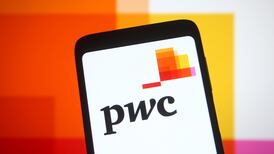It’s October 31st and reports are coming in of major cyber attack on power plants in the United States. Generators shut down in more than a dozen states and Washington DC, leaving 93 million people without power.
The unprecedented Halloween blackout leaves major urban areas such as New York without power for a fortnight. Mobile phones stop functioning as backup power to phone towers fails, food is in short supply, and hospital emergency rooms are overrun. Chemical plants begin leaking toxic waste into the Hudson River.
Trading is halted on the New York Stock Exchange for two full days and global markets crash by more than 16 per cent – one of the biggest collapses ever – as the world watches the unfolding panic.
So far, that’s pretty much a standard disaster movie scenario. But there’s more. As America reels from the blackout, a category five storm hits Miami, moving on through Louisiana and then Mexico.
Hurricane Guy Fawkes leaves a path of devastation in its wake, with more than 100,000 homes destroyed and 1.8million buildings damaged in the subsequent storm surge and floods, along with energy platforms in the Gulf of Mexico.
We’re not done yet. At the same time, an accounting scandal surfaces at a major reinsurance firm, sending it and maybe other firms into default, putting disaster payouts at risk . . .
The end result is a colossal bill of $200 billion, the biggest loss in the history of the insurance market – twice the size of Hurricane Katrina and at least four times the size of the World Trade Centre insured loss.
Ability to withstand
That, at least, is the calculation from the London insurance market after a “war games” exercise conducted in the City late last year, aimed at testing the industry’s ability to withstand a series of catastrophic events.
The disaster scenarios were staged over a two-week period in the autumn after leading industry figures had expressed concern that the insurance market might have become too complacent since the devastating events of 9/11, now more than 15 years ago, and would be unable to cope with “the next big one”.
In total, 28 organisations took part in the exercise, including leading underwriting and brokerage firms and Lloyd's of London, with observers from Bank of England regulators, the Treasury, and ratings agencies looking on.
The good news is that the industry came through its imaginary Armageddon in good shape, according to results released on Tuesday. No significant liquidity challenges were found, the report said, and firms were confident they would be able to pay claims fairly and promptly as well as ensuring continuity of cover.
Following a major catastrophe, insurers need to be swift and effective in pricing and underwriting additional risk. As the report notes, this ability proved critical after 9/11, when Lloyd’s helped keep airlines flying by maintaining aviation cover.
If there should be delays in payouts, the press and public would be unlikely to differentiate between the actions of a single company and the entire market. The adverse publicity might take years to recover from, the report said.
The war games weren't solely about assessing solvency and financial performance, according to organiser Robert Childs, chairman of Hiscox. It was also about "seizing the opportunity" in a "hardened rating environment." As the report says, a dislocated market will present opportunities for new business.
Other important aspects of the disaster dry run were communicating clearly and candidly, and providing leadership amid the apparent disarray.
Crisis training
A number of actions are now being taken as a result of the exercise, including the establishment of crisis training programmes and a stepping up of collaboration with Bank of England regulators to ensure an effective post-catastrophe response.
Participants in the exercise were confident they would be able to raise the additional capital required after such a disaster, whether from parent companies or in the bond or equity markets. “Clear plans” for capital raising in such an event should continue to be maintained, the report recommends.
As Childs noted, it’s not easy to create the same sense of fear and uncertainty in a tabletop exercise as was felt in the aftermath of 9/11. But with many of the key decision-makers from that time having now retired or coming towards the end of their careers, it was important to engage those who are now running the market, he said.
They were leaving school and college in 2001 and will never have experienced such a catastrophic event. We can only hope they never do.
Fiona Walsh is business editor at guardian.com











